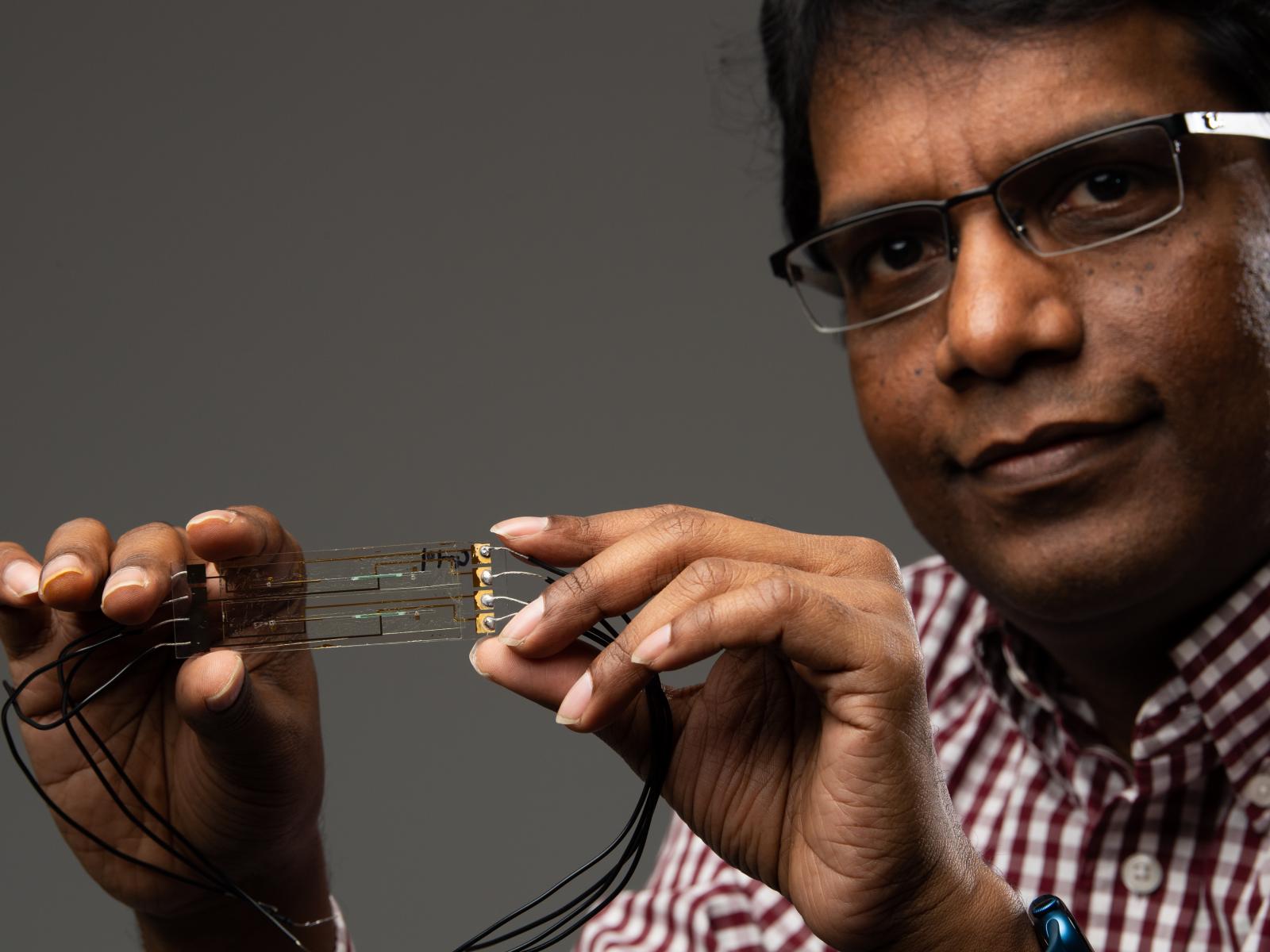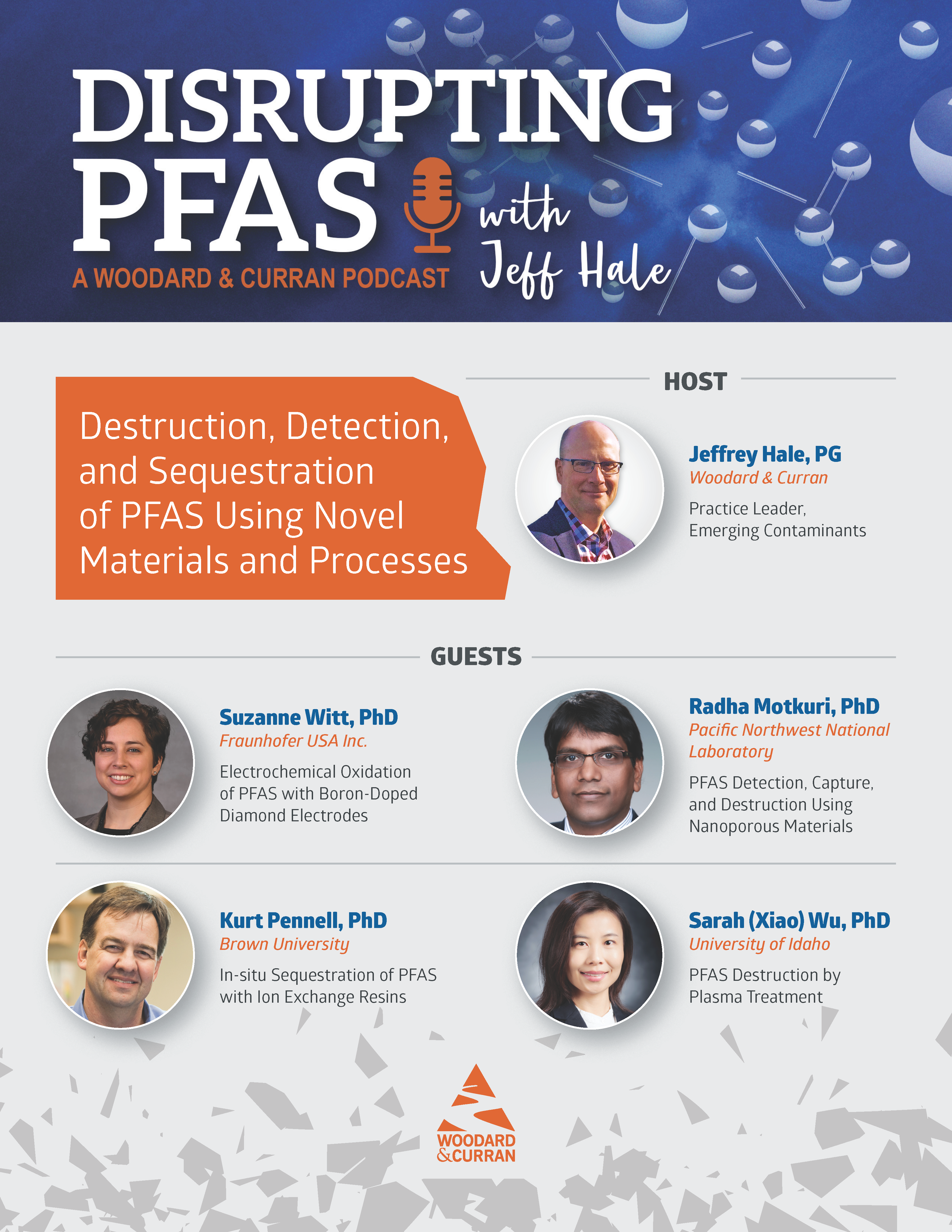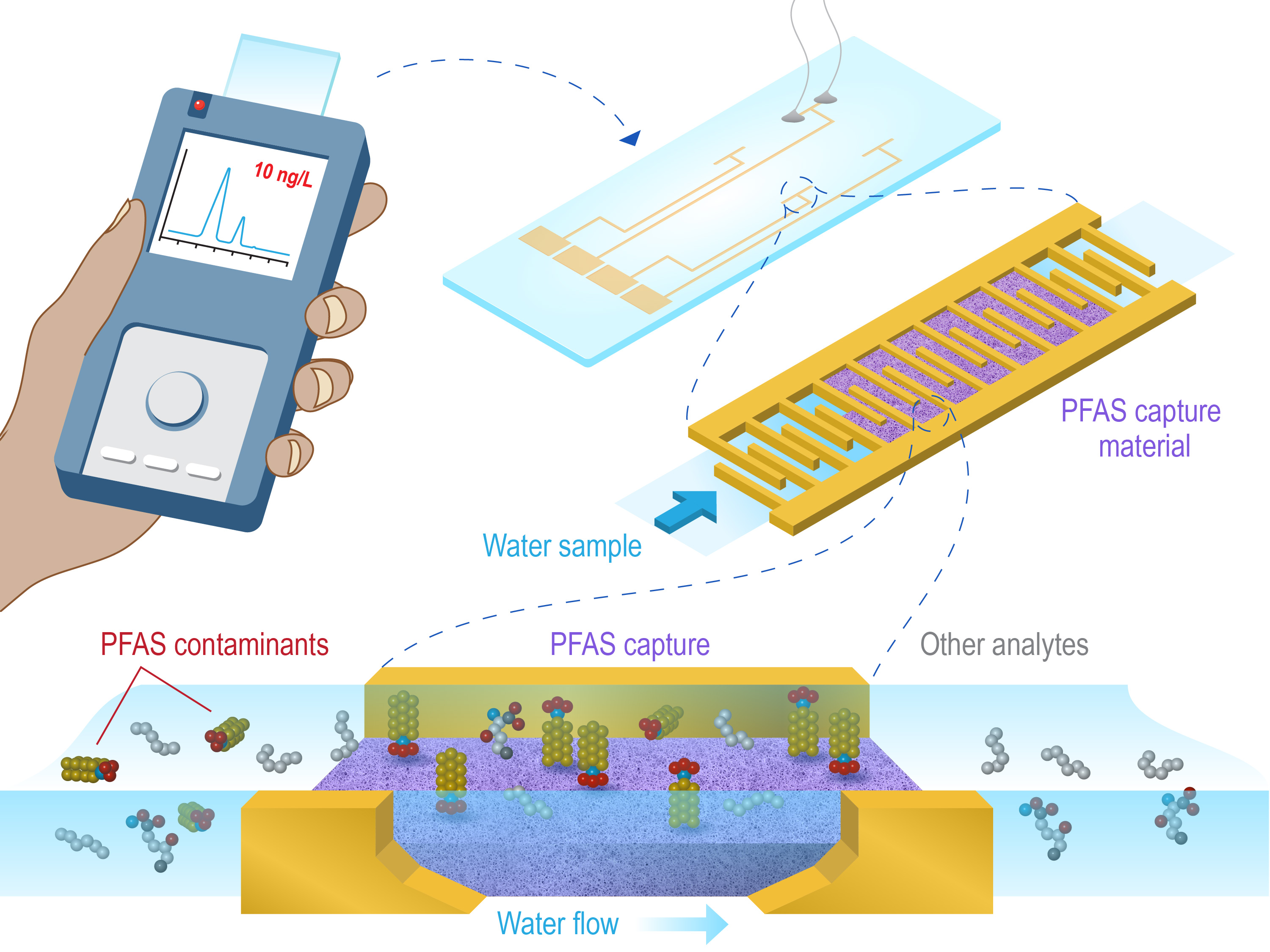Motkuri on National PFAS Podcast
PNNL senior chemical engineer and material science expert, Radha Kishan Motkuri, shares his successful approach to remediation.

PNNL researchers developed a proprietary, lab-on-a-chip tool that can detect PFOS levels that are 140 times lower than the federal health advisory. It offers an unprecedented way to detect ultra-low levels of PFOS accurately on-site.
(Photo by Andrea Starr | Pacific Northwest National Laboratory)
March 2, 2022 - 5 p.m. PST

